
BRUNECK.it
BRUNICO.it
[HOME]
[WELCOME]
[HOW TO GET HERE]
[HISTORY]
[TYPICAL FEATURES]
[SHOPPING]
[EATING and DRINKING]
[LODGINGS]
[SERVICE]
[ECONOMY]
[REAL ESTATE]
[EVENTS]
[SPORT]
[EXCURSIONS]
[FOTOGALLERY]
[GUESTBOOK]
[PARTNER]
[VARIOUS]
HISTORY:
Bruneck was first settled back in the Stone Age. Objects found (such as the stone axe in Rasen), date back to the Bronze and Iron Ages and can be
seen in Bruneck and places around it.
Relicts of Roman times can be seen everywhere - such as the milestone
in Sonnenburg directly on the main road, which marked the route the Legions took through the valley from Aquileja to Aguntum.
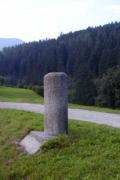
The Celtic-Illyrishen tribes were christianised and taken over by Romans until the Bavarians took over the supremacy of the region (after savage battles with the Slaves) in the sixth century.
A witness of this is the founding of the ”Stift Innichen“ by Duke Tassilo II in 769 AD.
Reflected in the names of the region are the Bavarian settlers - The county Pustrissa was given to a Count who made Suanpurc (Sonnenburg) his home.
In 1091 Emperor Henry VI gave the region (later to the Bruneck) to the Bishop of Brixen, Altwin.
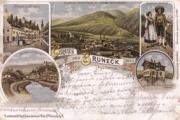
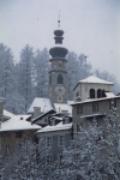
In order to safeguard his lands and property Bishop Bruno von Kirchberg and Bullenstein built the Castle and town of Bruneck in 1250.
In 1256
the settlement “apud Bruneke“ appears in the records.
In 1370 the town was given the freedom of “weekly markets“.
Flourishing business and trade helped the town grow- At the beginning of the fifteenth century the first houses and workshops were built - mostly for the craftsmen. It was the birth of the picturesque ”Stadtgasse“. Floods in the 14th and 19th centuries, the plague (1543/44), catastrophic fires and earthquakes struck the town, but Bruneck was rebuilt again and again.
The years between 1814-1914 can be called the “flourishing years“ - visitors started to discover the region and alpinism begin to establish itself. 1871 saw the opening of the Puster Valley Railway.
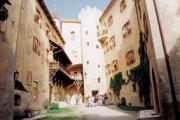
With the outbrake of the First World War this period came to an end, although the town was spared destruction during the war.
The Second World War took lives and left its mark behind.
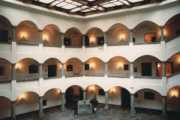
The latest development shows a town which is economically and culturally the centre of the Puster valley. Industry and trade are amalgamated to the advantage of both residents and visitors.
[WELCOME] [HOW TO GET HERE] [HISTORY] [TYPICAL FEATURES] [SHOPPING] [EATING and DRINKING] [LODGINGS] [SERVICE] [ECONOMY] [REAL ESTATE] [EVENTS] [SPORT] [EXCURSIONS] [FOTOGALLERY] [GUESTBOOK] [PARTNER] [VARIOUS]